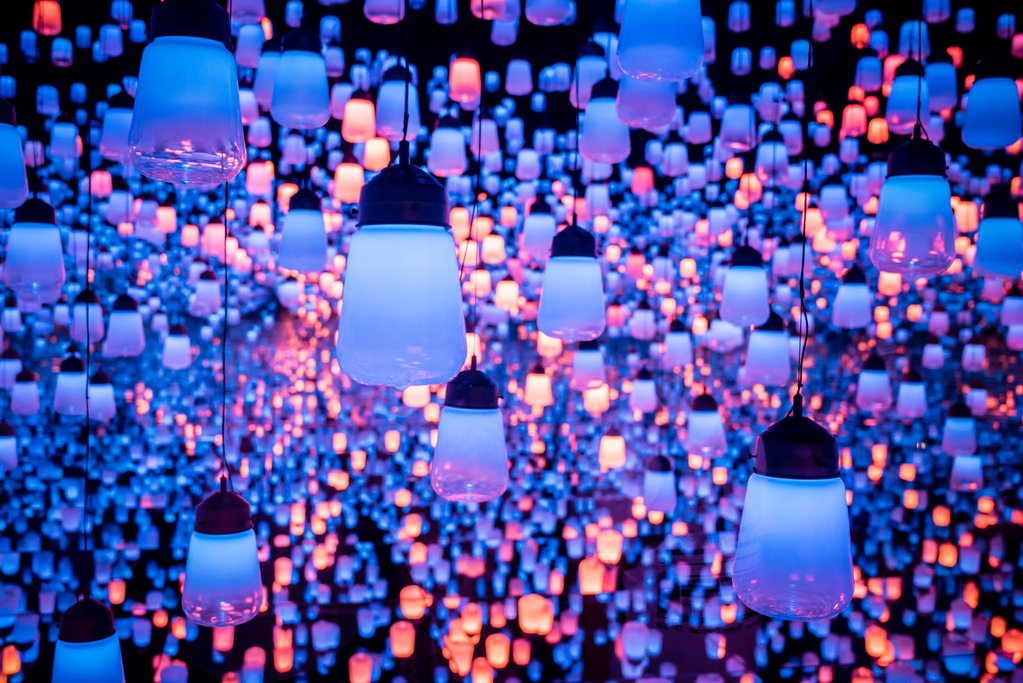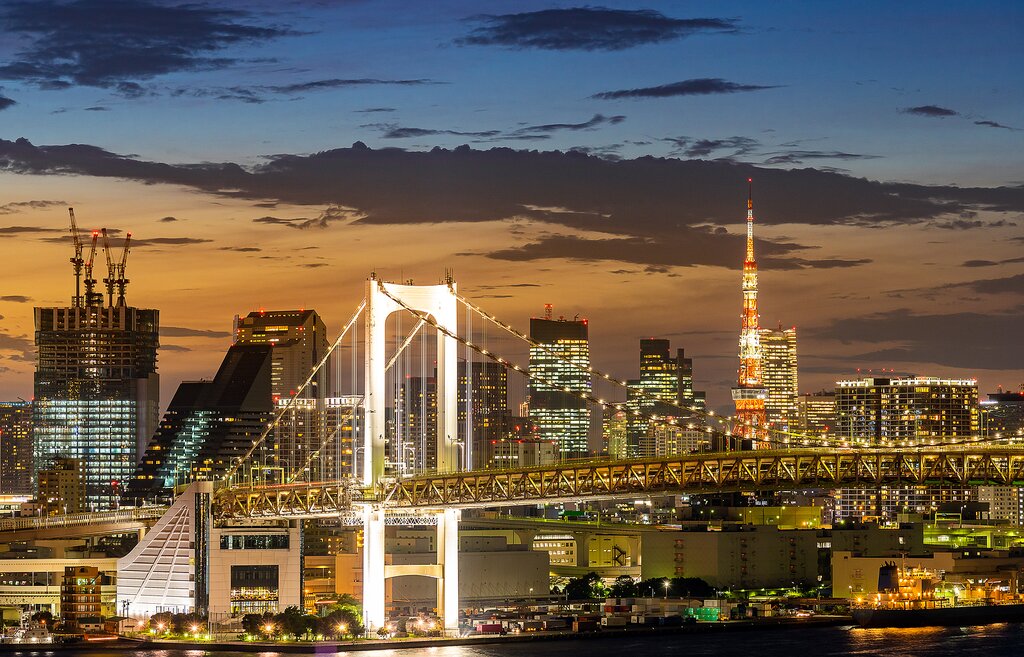Highlights
- Immerse yourself in traditional Japanese culture in Kyoto
- Ski or snowboard the powdery slopes of Niigata
- Wander through a towering bamboo grove in Arashiyama
- See monkeys relaxing in natural hot springs in the mountains
Brief Itinerary
| Day | Highlights | Overnight |
|---|---|---|
| Day 1 | Welcome to Japan! | Kyoto |
| Day 2 | Explore the Ancient Capital of Kyoto | Kyoto |
| Day 3 | Walk Through a Bamboo Forest in Arashiyama | Kyoto |
| Day 4 | Visit Himeji Castle | Kyoto |
| Day 5 | Go Back in Time in Takayama | Nagoya |
| Day 6 | Ski the Slopes of Niigata | Minami-Uonuma |
| Day 7 | Dip in the Hot Springs of Nagano | Minami-Uonuma |
| Day 8 | Enjoy a Free Day to Relax | Minami-Uonuma |
| Day 9 | Get to Know Tokyo | Tokyo |
| Day 10 | Enjoy Sumo & Sake | Tokyo |
| Day 11 | Side-trip to Nikko's Temples & Shrines | Tokyo |
| Day 12 | Visit a Village Near Mount Fuji | Tokyo |
| Day 13 | Explore Futuristic Odaiba | Tokyo |
| Day 14 | Depart Tokyo |
Detailed Itinerary
Day 1: Welcome to Japan!

Welcome to Kyoto, the former capital of Japan! Overflowing with history and a lot more traditional than its Tokyo counterpart, things here move at a slower pace, and the people tend to be more laid-back. While here, a visit to what is arguably the most famous shrine in Japan—Fushimi Inari—is an absolute must. Featured in the movie Memoirs of a Geisha, this shrine has more than 10,000 picturesque red torii gates. They were all donated by Japanese individuals and businesses as a sign of appreciation to the god Inari for the blessings received.
Day 2: Explore the Ancient Capital of Kyoto

Take some time to walk along the canals of Kyoto in the morning, when you'll have some free time. Your next stop is a traditional Japanese arts show. As well as offering a chance to see a performance by a maiko (geisha in training), this hourlong theatrical experience also introduces you to various skilled artists, including ikebana (flower arrangers), puppeteers, koto (Japanese harp players), and court musicians. In the evening, take a walk through the bustling streets of Pontocho. Right next to the Kamogawa River, this area is home to a wide range of restaurants and bars. You can also request a private dinner or tea ceremony with a geisha if you prefer.
Day 3: Walk Through a Bamboo Forest in Arashiyama

Travel today to the tranquil area of Arashiyama. You will start your day with a ride on an open-air train that offers amazing views of the river and the surrounding forest. (Note: This train does not operate in the winter months.) You'll then venture down the Hozugawa River on a traditional Japanese boat. This activity is often the highlight of the trip, and depending on the season, you'll be floating past white and pink cherry blossoms (in March), the deep green leaves of a warm summer (in July), or the brilliant and fiery colors of autumn trees (in November).
Then you will embark on a tour of some of the area's well-known sites. Tenryuji Temple is a UNESCO World Heritage Site and houses one of the most picturesque and ancient landscape gardens in the entire country. Behind it, you will find its world-famous bamboo grove, which transports visitors into another realm—or at least appears to.
Also, in the area, you will find the Nonomiya shrine and the Iwatayama Monkey Park, where macaques roam freely. If you're up for a walk, a lovely temple houses hundreds of statues. If you look closely, you'll find some of these Buddhist statues sporting glasses and carrying cellphones, a reflection of how modern life has also affected spiritual practices.
Day 4: Visit Himeji Castle

Chat with a local specialist who can help organize your trip.
Day 5: Go Back in Time in Takayama

Make your way to Takayama today for a change of pace. This mountain city is sometimes called "Little Kyoto" for its well-preserved historic buildings.
You'll explore the Old Town and Sannomachi Street, where you'll find traditional homes, shops, restaurants, and sake breweries, some of which have been in operation for centuries. Many of the buildings have been turned into museums, offering visitors the chance to see how merchants lived in this remote part of Japan during the Edo Period (1603 to 1868). Later, you'll visit a traditional village to learn what life was like in a farm village back centuries ago. Continue to Nagoya for an overnight before the ski trip begins.
Day 6: Ski the Slopes of Niigata

Today, you will journey to the northern regions of Japan for a skiing adventure. Yukiguni is a beautiful place, and the quality of snow in the area is famous all around Japan. This is an excellent opportunity to avoid the crowds around larger ski areas, and this resort also has a few slopes that are family-friendly. Choose a full-day or half-day ski trip, depending on your energy level and interest.
Day 7: Dip in the Hot Springs of Nagano

After a day of skiing, rest your body in the hot springs of Nagano. Thanks to the fact that Japan is one of the world's most volcanically active countries, this region is rich with natural mineral springs popular with locals and tourists alike. Nagano alone has hundreds of hot springs, many with day-use facilities catering to visitors. Depending on where you go, you may have company—monkeys are famous for bathing here, too! The region makes a great day trip from the ski area. Head back to your hotel for the night.
Day 8: Enjoy a Free Day to Relax

Yokoyu River in Nagano, Japan
Today is yours to relax or explore as you wish. Hit the road again to visit more of the region's famous hot springs, or spend time in town, exploring the streets of Nagano and stopping to dine and shop in local businesses. Points of interest worth detouring to in the area include Zenkoji Temple, an important pilgrimage spot for Buddhists in Japan, and Okusha Shrine, which is accessible by a 40-minute hike through the woods. The trees that tower high above the trail are more than 400 years old.
Day 9: Get to Know Tokyo

Welcome to Tokyo! Start with a visit to the world's tallest tower. At 2,080 feet (634 m), the Tokyo Skytree offers spectacular views as far as Mount Fuji from its 360-degree observation deck. Afterward, take a walk through the grounds of Sensoji, the city's oldest and most historically significant temple. Legends say it was founded when two brothers fished a statue of the goddess Kannon out of the Sumida River. The neighboring Asakusa Shrine also highlights the stark differences between Shinto and Buddhist belief systems.
As night falls, make your way to Shibuya, home to the vibrant Shibuya Crossing. The area is packed with restaurants, bars, and nightclubs, perfect for a night out on the town.
Day 10: Enjoy Sumo & Sake

Today you'll get a deeper insight into some traditional and spiritual aspects of Japanese culture. Begin by heading to a morning sumo training session in Ryogoku, where you'll witness the skill and power of these traditional athletes. More ceremony than sport, sumo wrestling is a tradition that began centuries ago—as the legend goes, it started as a ritual to entertain the gods.
Afterward, take a short walk to the Edo-Tokyo Museum to discover what it was like to live in 16th-century Japan. Learn about how the residents worked together to build and protect their communities while walking through the halls of a replica Edo-era town. End the afternoon with a visit to one of Tokyo's sake tasting centers. Choose from a sampling of over 80 different fermented wines and spirits as you learn the art of food and sake pairing.
Day 11: Side-trip to Nikko's Temples & Shrines

Today you'll head north to Nikko, home of the UNESCO World Heritage-listed Toshogu Shrine. The ornate shrine, which contains the mausoleum of Japan's last shogun, is one of the most beautiful in Japan. A short walk south will take you to Rinnoji, Nikko's most famous temple. Explore the grounds at your leisure, visiting a charming Japanese garden and a shrine that's said to house Nikko's three mountain gods.
Finish your day with some lighthearted fun at Edo Wonderland, a cultural theme park where you'll step back in time to the 15th century. Sit back and experience a traditional magic show, or try your hand at Hariko doll painting or makeup artistry. You'll also have the chance to take a samurai sword-fighting class. When you're ready to return to the 21st century, you'll head back to your accommodation in Tokyo for the evening.
Day 12: Get Up Close to Mount Fuji

Get away from the busy downtown today and take a break to explore the Lake Kawaguchi area. Visit the
Narusawa Ice Caves, a lava tunnel formed when Mount Fuji erupted centuries ago. The caves are filled with ice pillars all year long. Then head to Chureito Pagoda, from where you can enjoy one of the most iconic views of Mt. Fuji. The pagoda is especially stunning during the spring and autumn months when the trees turn pink and gold, respectively.
Other options today include a trip to Fujikyu Highland, one of Japan's most popular theme parks. It features roller coasters (one of which is the steepest in the world) as well as several anime-themed attractions based on popular films and TV series. Alternatively, at Shinobi no Sato Ninja Village, you'll get the chance to learn about ninjas. The park is like a ninja-themed town designed for children, offering ninja shows and the opportunity to perform stunts, throw ninja weapons, and take a training course to turn into a stealthy ninja warrior.
Day 13: Explore Futuristic Odaiba

Today you'll explore the artificial island of Odaiba, a hot spot for futuristic fun. The trip to this shopping and entertainment district is enjoyable, whether you arrive by taking a cruise through Tokyo Bay or by crossing the colorful Rainbow Bridge. Start at TeamLab, a permanent interactive art exhibition on the island that gives new meaning to the term "modern art"—be prepared to follow art as it moves along the walls. Car enthusiasts can also visit the nearby Toyota City Showcase. Check out the latest innovations in the technology zone, reminisce about the old days in the vintage car collection rooms, or test-drive a favorite car on their private track (an international driving license is required).
In the evening, experience one of Tokyo's wackiest shows at the Robot Restaurant. Less of a culinary adventure and more of a theatrical experience, this 90-minute show is jam-packed with neon lights and vibrant music and is a great way to experience Japan's techno culture. Afterward, weave in and out of the alleys of the famous Golden Gai district, stopping in some of the area's hundreds of bars. It's a lively way to finish your last night in Tokyo.
Day 14: Farewell Tokyo

Today you'll bid farewell to Japan. After breakfast, you'll transfer to the airport to catch a flight out. Safe travels!
More Great Japan Itineraries
Looking for more inspiration for your trip to Japan? Check out these other Japan itineraries, explore different ways to spend two weeks in Japan, or discover the best time to visit Japan.


